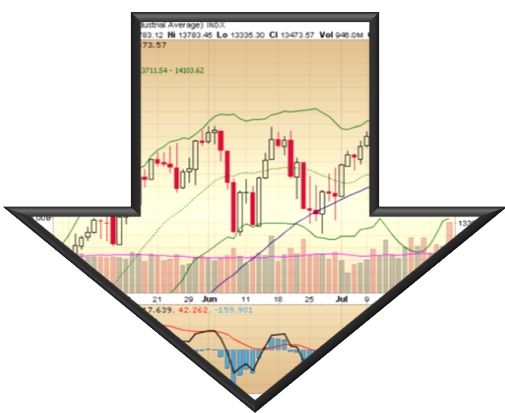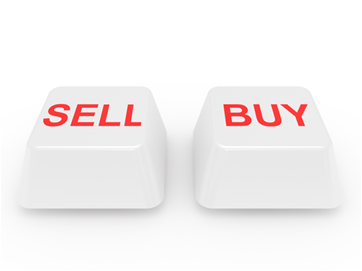What are CFDs?
 In finance, CFDs (Contract for Difference) are leveraged derivative products. They are referred to as derivatives since their values are derived from values of other assets such as shares, market indexes or commodities.
In finance, CFDs (Contract for Difference) are leveraged derivative products. They are referred to as derivatives since their values are derived from values of other assets such as shares, market indexes or commodities.
Trading in CFDs involves taking positions on the variance in values of underlying assets over specific periods of time. In simple terms, traders place bets on whether or not values of underlying assets are going to change (by falling or rising) in the near future, in comparison to what the original values had been before execution of the contracts.
What are the risks associated with trading in CFDs?
There are various complexities and risks in trading that may prevent retail investors from achieving their investment objectives and needs. They can be classified into four broad categories;
- Investment risk- possibility of investment markets moving against the traders/ investors.
- Client money risk- danger of the CFD provider losing all or some of the finances held on behalf of investors.
- Counterparty risk- risk of a counterparty (such as the CFD provider) failing to fulfill contractual obligations.
- Liquidity, execution & gapping risks- when the trading mechanics and market conditions prevent investors (through CFD providers) from trading when they want to or at undesirable prices.
 What are some of the factors that investors must put into consideration regarding fees and charges levied by providers?
What are some of the factors that investors must put into consideration regarding fees and charges levied by providers?
Prospective investors should establish fees and charges that are compulsory and those that aren’t. They should find out if they’ll be required to pay costs of data and software even if they don’t execute any trading transactions.
Additionally, investors should find out if there are account inactivity fees and also if there are any charges for making money transfers into and out of CFD trading accounts.
Can CFDs enable investors to achieve the investment objectives and needs that they have?
Before investing in CFDs, it’s important to differentiate between perception and reality.
The general expectation among investors is that they can be easily traded without much effort. However, CFD trading is quite complicated and requires regularly monitoring.
Many believe that CFDs always generate high returns. The reality is that traders often suffer huge losses. Substantial financial returns on certain individual trades are often counter-balanced by financial losses on others.
Some people believe that CFDs trading and online share trading are very similar. The reality is that although there is similarity in trading platforms, the associated risks and nature of trading are very different.
Some people also believe that they can acquire necessary trading skills by simply attending education seminars. However, extensive training is required in addition to the basic knowledge learnt in education seminars.
How can investors determine the suitability of CFDs providers?
Investors should understand who is the specific company that is providing the CFDs.
There should be adequate information concerning the history, financial strength and performance of the provider.
Are all CFDs the same?
CFDs can be broadly classified into three:
- Market Maker Model-this is whereby CFD providers determine their own price for underlying -assets on which they are traded.
- Exchange Traded Model- a model whereby trading is done using CFDs that have been listed on the stock exchange.
- Direct Market-Access Model- whereby CFD providers place clients’ orders in the market for underlying assets. Prices paid by investors depend on the underlying market.
What are some of the trading essentials?
It’s important for investors to understand how their CFD providers handle trades, including how much they’ll be required to pay as well as trading platforms used.
Trading platforms are systems that CFD providers use to allow investors to execute trading activities. There are various platforms used by providers. Traders can place orders to buy or sell using mobile phones or at websites such as CMC Markets via online platforms.
Some trading platforms are easy to use while others are quite difficult.
Apart from the trading platform, there are other trading essentials that investors must take into consideration. They include; related charges and fees (such as interest), margin requirements, margin calls & liquidation, stop losses and dividend payments.
 Is it important to conduct adequate research before making investment decisions?
Is it important to conduct adequate research before making investment decisions?
Of course.
Trading in CFDs consumes a lot of time and is quite complicated. It’s therefore important to conduct adequate due diligence and research. It’s also important to exercise a lot of patience before making important investment decisions.
Research can be conducted by extensively studying the PDS (Product Disclosure Statement).
Necessary information can also be obtained from the following sources; website of the CFD provider, seminars, consultants, friends and family members.
What are some of the important disclosure yardsticks for Over the Counter CFDs?
The yardsticks help investors in understanding the risks associated with Over-The-Counter CFDs and decide whether or not to trade in them.
The following are six important disclosure yardsticks for Over-The-Counter CFDs;
- Client qualification
- Margin calls
- Opening collateral
- Suspended underlying assets
- Counter-party risk (hedging),
- Client money and counter-party risk (financial resources).
What are some of the precautionary measures that prospective investors need to take?
It’s very important for investors to test the trading platform of prospective CFD providers before signing up. They should also ensure that they have sufficient finances and time to engage in trading.
Additionally, they shouldn’t be easily convinced by promotional gimmicks and/or pressure selling tactics.
If you do decide to explore this investment strategy then good luck. If it doesn’t seem right for you, have a read of the other investing articles here on Magical Penny to find a more appropriate strategy.
You must log in to post a comment.